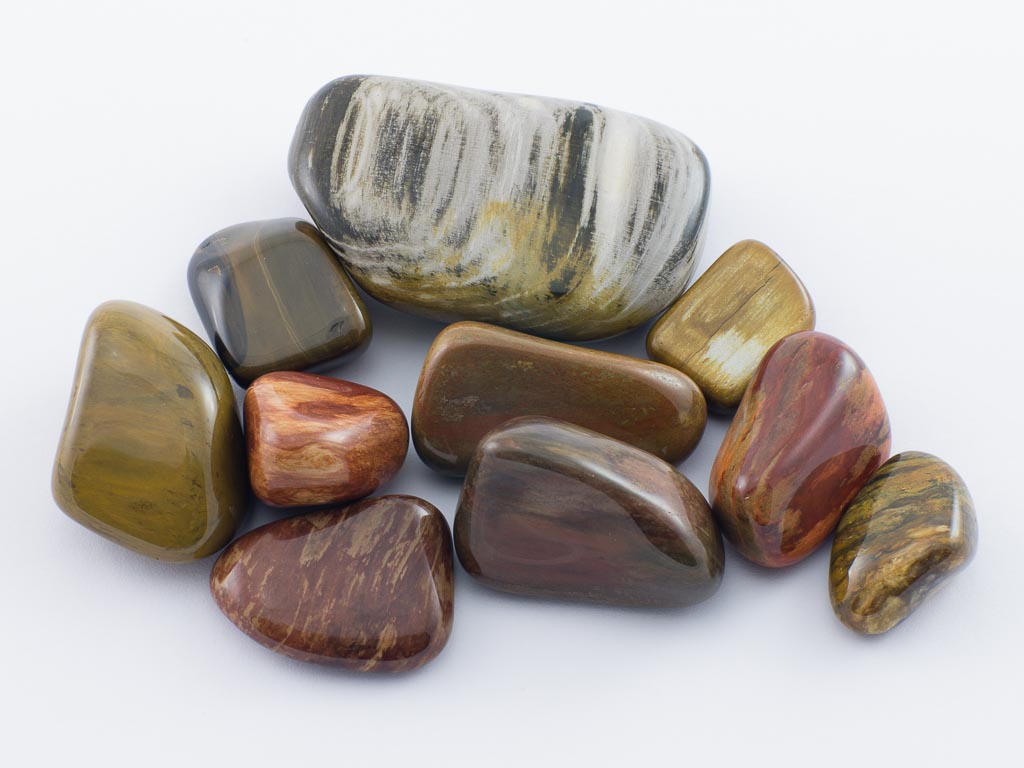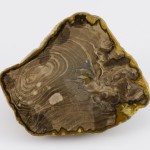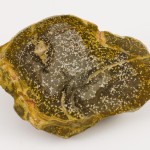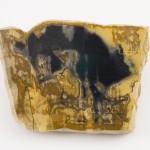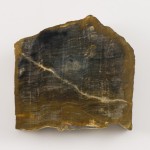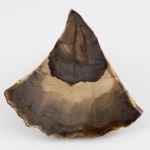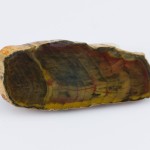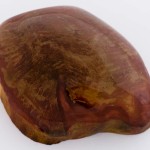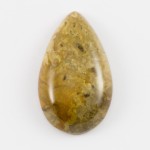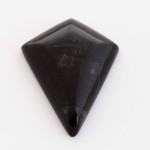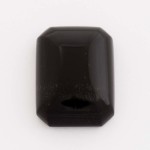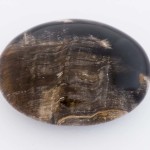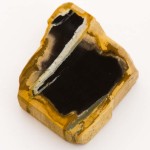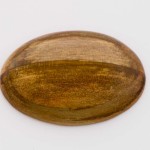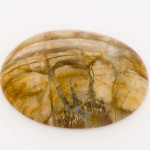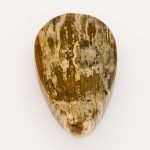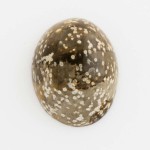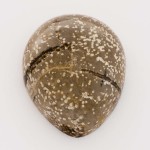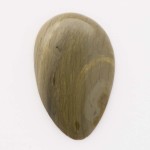Petrified wood is a common material in Tertiary-age gravel beds and ancient river channels in Tasmania. It’s particularly common in areas with Tertiary basalt flows.
How does petrified wood form?
There are several ways by which wood can be preserved well enough to become petrified. The most common involve the original trees getting buried under large quantities of flood debris, or volcanic ash.
In Tasmania, volcanic activity was common during the Tertiary, and most of our petrified wood was formed from trees buried under volcanic ash and basalt (lava) during this time. Volcanic materials are very rich in silica. Wood that has been heated during a pyroclastic or basalt flow is probably mostly sterile, so it will not rot when it’s buried. Dissolved silica from the volcanic materials gradually replaces the wood, but often the grain is well preserved and very evident.
The two main types of petrified wood are opalised and chalcedonic. In Tasmania, chalcedonic wood is much more common. This is wood that has been replaced by straight silica. Chalcedonic wood is the type you find at places like Lune River, Swansea, Tunnel Marsh, Tunbridge, Weymouth, many of the beaches around Hobart, and in quite a few other parts of Tasmania. Opalised wood is also found in Tasmania, but only occasionally. Opal is a hydrated silica that contains as much as 20% water. It is softer than chalcedony. Opalised Casuarina trees have been found in the Bushy Park / Macquarie Plains / Plenty area, buried under Tertiary volcanics. These included an entire tree, twigs, branches and trunk, still standing where it grew before it was buried.
Petrified wood as a lapidary material
Petrified wood can be a very good lapidary material, but a lot of pieces are porous and almost chalky, and never take a polish. Highly silicified specimens take on a very good polish and make great slabs, specimens, and cabochons.
Pebbles of petrified wood that are common in many Tasmanian beaches can be very colourful and often take a great polish.
Gallery:
- Petrified wood. Milton Property, Swansea, Tasmania.
- Petrified wood. Milton Property, Swansea, Tasmania.
- Petrified wood, Lune River, Tasmania.
- Petrified wood, Lune River, Tasmania.
- Petrified wood.
- Petrified wood. Milton Property, Swansea, Tasmania.
- Petrified wood. Milton Property, Swansea, Tasmania.
- Petrified wood cabochon. Milton Property, Swansea, Tasmania.
- Petrified wood cabochon, Lune River, Tasmania.
- Petrified wood cabochon, Lune River, Tasmania.
- Petrified wood cabochon, Lune River, Tasmania.
- Petrified wood, Lune River, Tasmania.
- Petrified wood cabochon.
- Petrified wood cabochon, Lune River, Tasmania.
- Petrified wood, Lune River, Tasmania.
- Petrified wood cabochon. Milton Property, Swansea, Tasmania.
- Petrified wood cabochon. Milton Property, Swansea, Tasmania.
- Petrified wood cabochon.
Links:
- Occurrences of Gemstone Minerals in Tasmania. R.S. Bottrill and W.L. Matthews. 2006.
If you like the content at Apple Isle Prospector, feel free to get in contact, or leave a comment. If you enjoyed this article, then let others know by sharing it on Facebook or liking our Facebook or Twitter pages:

